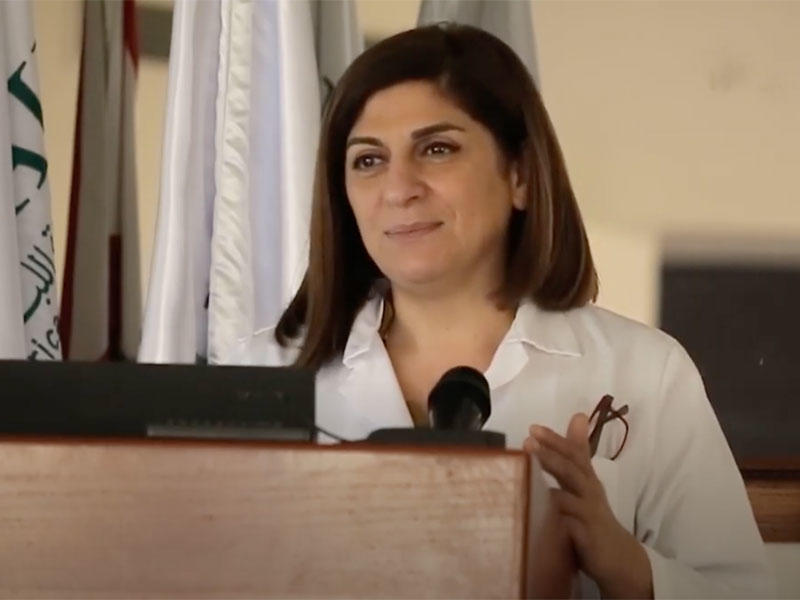Lina Aoun, Chief Nursing Officer
Our nurses rushed in from near and far.

I had just arrived home when the blast hit. Reports started coming in about an explosion in the Beirut Port, and although I had no idea about the extent of its reach at that stage I decided to head back to the hospital. On the way, our CMO Dr. Georges Ghanem called to have me report all nurses to the hospital, and that’s when I first realized that this must be big.
It took me half an hour to arrive – during which I contacted everyone on our nursing WhatsApp group, announcing code white (disaster code), which means that every staff member has to report if they can.
Nurses rushed in from near and far, in their cars and on foot. Some even parked their cars when they hit traffic and hitched rides on strangers’ motorbikes.
The scene at the hospital was one out of a movie. The reception, corridors and waiting areas were packed with injured people on the floor. There was blood everywhere.
Throughout my experience as a Red Cross first respondent during the civil war and treating the wounded in the field and at hospitals following explosions, air raids and assassinations, I have never seen anything like this. No amount of planning could’ve prepared us to receive such a massive number of patients.
To alleviate the pressure on the ER, as soon as more nurses started arriving, I instructed them to transfer the mild cases to one-day surgery and one-day chemotherapy units, which could accommodate 28 patients. We also created a makeshift triage area outside the entrance to the hospital and made more room in the ER.
Our hospital had sustained a lot of damage. Our operating room, for instance, had its main door blown off, and people were walking in and out while 67 surgeries were in process.
Our collective sense of responsibility and agility made for an excellent response. At one point, I remember asking an HR staff member to help us collect patients’ names and data as admission staff was overwhelmed. We were already on 45-percent occupancy because of COVID-19, which meant that there was only one nurse on each floor catering to an average of five patients. The fact that we are a university hospital was an advantage with plenty of residents, medical and nursing students, including clinical educators, responding to our call.
We worked non-stop until 2 a.m. Having people ask about their loved ones, when we were unable to immediately identify all the casualties, was heartrending. In the aftermath, there was fear, anger, pain and loss.
Our nurses’ devotion truly exceeded every expectation. Many had left their homes in ruins to serve others.